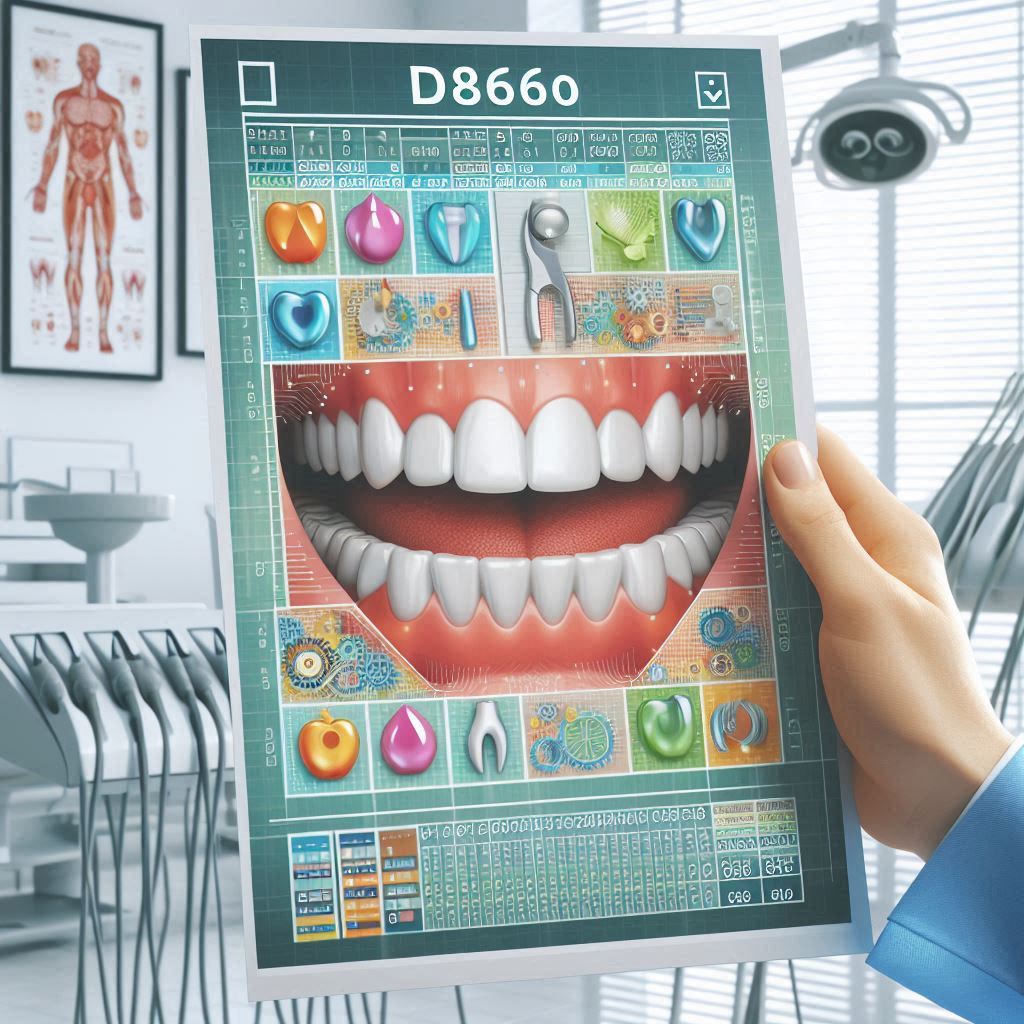D8660 Dental Code
The D8660 dental code is a critical component in orthodontic treatment documentation and billing. It falls under the American Dental Association (ADA) Current Dental Terminology (CDT) codes and is specifically designated for pre-orthodontic treatment visits.
Orthodontics is a specialized field requiring precise diagnosis, treatment planning, and follow-up care. The D8660 code ensures that dental professionals are appropriately compensated for preliminary evaluations before full treatment begins.
This article provides an in-depth, exclusive guide to the D8660 code, covering its applications, billing procedures, insurance implications, and best practices for dental practitioners.

2. Understanding the Purpose and Scope of D8660
The D8660 code is defined as:
“Pre-orthodontic treatment visit to monitor growth and development.”
This code is used when a patient requires observation and assessment before committing to full orthodontic treatment. Common scenarios include:
- Monitoring jaw growth in children
- Evaluating tooth eruption patterns
- Assessing skeletal discrepancies
- Determining the optimal time for braces or aligners
Unlike D8070 (Comprehensive Orthodontic Treatment), D8660 does not involve active treatment but focuses on diagnostic monitoring.
Key Features of D8660
✔ Preventive Focus – Helps in early intervention
✔ Non-Treatment Code – No appliances or braces are placed
✔ Time-Based – Typically involves periodic evaluations
3. When is the D8660 Code Used?
Dentists and orthodontists use D8660 in the following situations:
A. Pediatric Orthodontic Assessments
Children between ages 6-10 often require growth monitoring before braces.
B. Delayed Treatment Planning
If a patient is not yet ready for braces but needs supervision, D8660 applies.
C. Insurance Documentation
Some insurers require pre-orthodontic documentation before approving comprehensive treatment.
Table: Comparison of D8660 vs. Other Orthodontic Codes
| Code | Description | Usage |
|---|---|---|
| D8660 | Pre-orthodontic visit | Monitoring growth |
| D8070 | Comprehensive braces | Full treatment |
| D8670 | Periodic ortho visit | Mid-treatment check |
4. Key Differences Between D8660 and Related Codes
Many dental professionals confuse D8660 with similar codes. Here’s a breakdown:
- D8660 vs. D8010 (Limited Ortho Evaluation)
- D8010 is a one-time exam, while D8660 involves multiple visits.
- D8660 vs. D8080 (Interceptive Orthodontics)
- D8080 involves active treatment (e.g., expanders), whereas D8660 is observational only.
5. Step-by-Step Process for Reporting D8660
To ensure proper billing:
- Patient Evaluation – Document growth patterns.
- Clinical Notes – Justify the need for monitoring.
- Insurance Pre-Authorization – Verify coverage.
- Submit Claim – Use the correct CDT code.
6. Common Challenges and Misconceptions
❌ Myth: D8660 can be billed alongside active treatment.
✅ Fact: It’s strictly for pre-treatment monitoring.
❌ Myth: All insurers reimburse D8660.
✅ Fact: Coverage varies—always verify beforehand.
7. Insurance and Reimbursement Considerations
- Medicaid & PPO Plans – Some cover D8660.
- Frequency Limits – Often restricted to once every 6-12 months.
8. Case Studies and Real-World Applications
Case Study 1: Early Intervention Success
A 9-year-old patient with delayed eruption was monitored under D8660, leading to timely braces placement.
9. Best Practices for Dentists and Billing Specialists
✔ Detailed Documentation – Avoid claim denials.
✔ Patient Education – Explain the necessity of pre-ortho visits.
10. Future Trends in Orthodontic Coding
With AI and digital scans, coding may evolve, but D8660 remains essential for growth assessments.
11. Conclusion
The D8660 dental code is vital for pre-orthodontic evaluations, ensuring proper growth monitoring and treatment planning. Understanding its correct application, insurance nuances, and documentation requirements helps dental professionals optimize patient care and billing accuracy.
12. Frequently Asked Questions (FAQs)
Q1: Can D8660 be billed for adults?
A: Rarely—it’s primarily for growing children.
Q2: How often can D8660 be billed?
A: Typically once or twice a year, depending on the insurer.
Q3: Does D8660 cover X-rays?
A: No, radiographs require separate codes (e.g., D0330).


